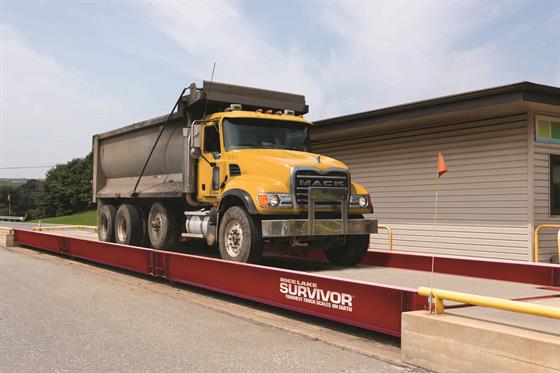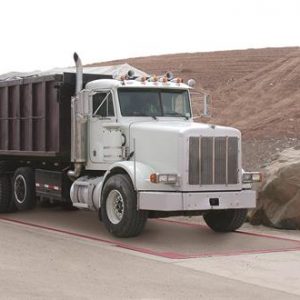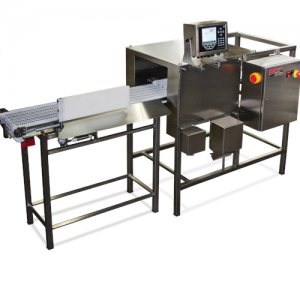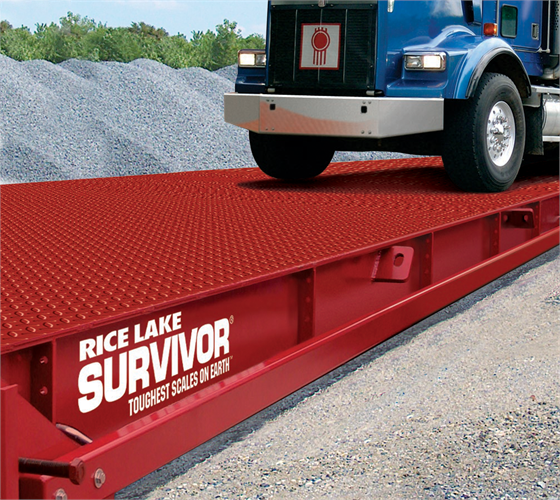
RICE LAKE SURVIVOR® ATV Truck Scale
July 5, 2019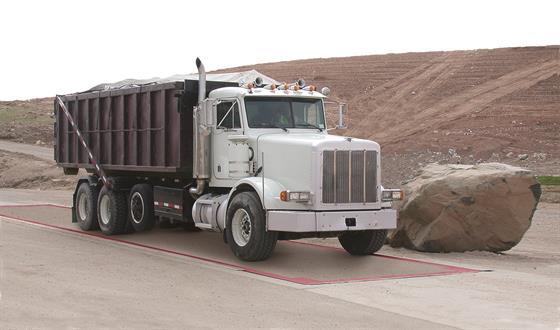
RICE LAKE SURVIVOR® PT Series Truck Scale
July 5, 2019RICE LAKE SURVIVOR® SR Truck Scale
- 75,000 lb capacity load cells and pre-assembled G-Force™ mounts
- Junction box(es) appropriate for number of load cells utilized
- NTEP Certified 98-011
- 120,000 lb Concentrated Load Capacity (CLC)
- 120,000 lb Dual Tandem Axle (DTA)
- Up to 200,000 lb full scale capacity
- 8 in thick reinforced concrete deck
- Up to 42 ft section span
- Three standard widths: 11 ft, 12 ft and 14 ft
Information
Proven. The toughest truck scale made, any way you look at it.
The SURVIVOR SR Series side rail truck scale offers superior strength and longevity proven by the SURVIVOR brand. With design elements that outperform competitor brands, a SURVIVOR SR truck scale offers the best total cost of ownership in the industry.
SURVIVOR SR stands up to constant heavy loading, with more wide-flange I-beams integrated throughout the weighbridge than other leading brands, and massive, wide-flange I-beams adding rigidity to each side of the weighbridge and acting as side guides for safe truck loading.
Custom sizes and capacities are available for fitting into nearly any application’s site requirements and space constraints.
Truck Scale Maintenance:
A thorough check-up every six months at the very minimum is the general rule. However, take into consideration your number of weighments, climate and the value of the product being weighed. Aside from the actual calibration, most of the inspection will consist of you or your scale technician conducting a visual inspection of the scale, foundation and surrounding area.
Calibration
Every vehicle scale should be calibrated and tested by a state-licensed servicing agent with no less than 25,000 pounds of certified test weights.
Foundation
Even the toughest scale on earth is put at risk on a poor foundation. Cracked foundations can lead to movement or settling which causes chronic calibration errors. Letting little cracks become big cracks may require removing part or all of the foundation and pouring a new one for the scale to once again weigh accurately.
Weighbridge
Take a look at the deck. Rust or crumbling concrete can weaken the scale’s structure and cause problems. Keep ’em smooth. Clean and paint rusted steel decks. Keep ’em shiny.
Binding is a common cause of inaccuracies. A rock as small as your big toe can become wedged between the foundation and deck. Installing T-Strip molding between the deck and foundation can help keep debris from getting caught or falling down into the scale.
Some above-ground scales have end cleanout plates that can be removed, allowing access to clean out debris that builds up on the foundation’s surface closest to the scale’s end.
Checking Devices
Some vehicle scales utilize suspension systems that don’t require checking devices, eliminating a time-consuming step in your PM protocol. If your scale has checking devices, make sure they are working properly. Inspect check rods to make sure the attachment points are solid. Check for binding. If there is a problem, weight readings will be inconsistent from section to section. Inspect hardware to ensure jam nuts are tight, rods are level and free of foreign material, and washers are not rusted or distorted. Even if they are working properly, replace corroded hardware components so they don’t fail in the future.
Unlike check rod binding, bumper bolt displacement is easy to spot. Bumper bolts need to be tight so they don’t move on their own, yet maintain clearance when the scale is both empty and loaded. Seasonal temperature and weather changes can cause concrete and steel to expand and bumper bolts can bind tight against the contact area. If binding occurs, adjust bumper bolts to maintain proper amount of clearance for all conditions. (Rice Lake SURVIVOR scales do not have bumper bolts.)
Load Cells
Examine load cells and the area surrounding them. The load cell area may contain dirt and debris that has built up since the scale’s last check. Load cells must have clearance to deflect through their capacity range. The same debris that can bind the scale deck can also keep the load cells and suspension components from moving freely.
Inspect load cell cables for damage. If damage is present, the seal is probably degraded as well. To combat this problem, some manufacturers offer rigid or flexible metal conduit to run the cable through, providing a layer of protection that’s nearly impervious to damage from rodents. Even though steel over braid cable provides more protection from damage than cable sheathed with polyurethane or plastic, they still need to be checked as well.
Weather is another enemy of load cell cables. When exposed to moisture, cables can become wicks. Water can be sucked through the cable’s length by capillary action until it enters the load cell or junction box. Once inside, it can damage components and seep into the inner layer of the cable. Wet cables may not cause signal distortion immediately, but they may slowly corrode the copper wires or shield beneath the insulation, causing big trouble sooner or later. Corrosion of the shield limits the cable’s effectiveness in blocking electromagnetic interference (EMI) and radio frequency interference (RFI). Corrosion of individual wires will degrade the signal. If you discover a wet home run cable or load cell, replace it. To help prevent moisture from entering the cell from the cable, bend the cable or flexible conduit downward to create a drip loop at the location just before it enters the cell.
Junction Box
Check the junction box (j-box) for internal condensation, is the most common moisture problem. This occurs from normal air exchanges from heating and cooling cycles, and over-aggressive washing that damages sealing components that haven’t been properly maintained. If left unchecked, wiring terminals and other components in the enclosure will corrode. Due to its material properties, a stainless steel j-box is more vulnerable to internal condensation. If stainless steel is not required, install a j-box with a fiberglass-reinforced polyester (FRP) enclosure. A desiccant bag in the enclosure will help control moisture.
Grounding
Scale manufacturers suggest a variety of grounding procedures. To avoid multiple zero references which can create havoc with data lines and attract lightning damage, single-point grounding is recommended. Checking a single-point ground involves several steps.
1. Verify the ground system of the AC power supply. It should read less than 1 ohm. Then, measure the AC voltage across the ground and neutral of the AC outlet. The result should be 0 volts AC, not to exceed 0.5 volts AC.
2. Install power conditioning. Electronic weighing systems are easily disturbed by any number of voltage distortions, so installing power conditioning products should be your first line of defense against power problems. A braided transient bypass cable should be used around load cells and between scale modules.
3. Check the ground again. Connect a bare 10 gauge copper wire to the frame of the scale platform and the grounding lug on the j-box board. Then run the copper wire back to the ground rod provided by the power company. This wire can be buried in the soil from the scale to the AC ground.
4. Check the AC power supplied to peripherals, such as remote displays, printers and computers. A remote device may not have the same AC power source as the indicator; therefore, each device may not be grounded to the same point. Again, transient protection devices should be grounded to the same wire as the peripherals they are protecting. Measure the resistance between the AC power ground points.
Quality Counts
No matter what type of scale you own: pit-type, above ground, side rail or portable vehicle scale, a portion of your preventive maintenance plan has been dictated by the manufacturer. Many scale understructures are left untreated and vulnerable to corrosion. Steel deck scales that have welded bottom plate harbor corrosion because water that seeps into the scale cannot run aground and evaporate. In these cases one can protect the scale components mentioned earlier. But the best protection of the understructure comes from the manufacturer. Invest in a scale that does not include a bottom plate and does include corrosion-resistant undercoating.
Depending upon the scale’s location, special features, and the material it is weighing, your scale inspection may or may not require all of the steps mentioned. But do them anyway. Your truck scale is a big investment, a mighty big ka-ching for any business. Keep ’em smooth. Keep ’em shiny. Keep your 15-ton “cash register” ringing as long as you can.
SURVIVOR SR Options:
- Steel deck
SURVIVOR SR Specifications:
Full Scale Capacity: Concentrated Load Capacity (CLC):
75,000 lb capacity; G-Force™ self-checking mounting system
Up to 200,000 lb
90,000 lb
Approvals: Warranty:
90,000 lb
NTEP Certified per H-44, Class IIIL, 98-011 Measurement Canada AM-5413
Ten-year limited warranty on the weighbridge; Five-year parts warranty, including lightning protection

